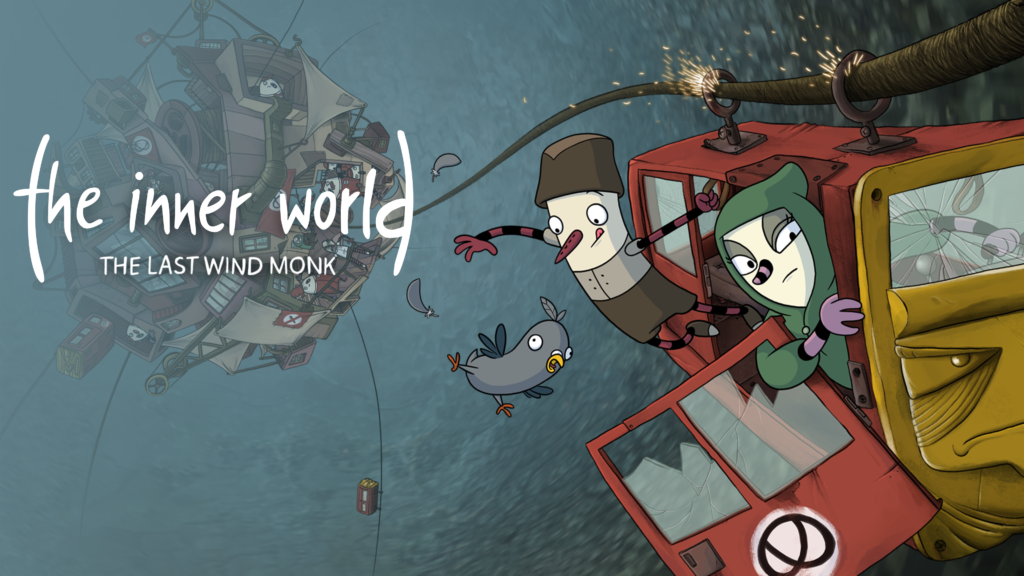
Different Vintage
Headup Games and Studio Fizbin gave Nintendo Switch owners The Inner World and The Inner World: The Last
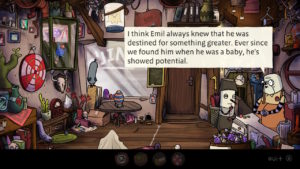
Wind Monk on the same day. The first game offers players great visuals, sound, and puzzles that require some creative thought. The first effort allows players to meander in the world of Asposia. You simply follow Robert’s quest to find out why Asposia’s wind fountains went away.
You discover it is due to one man’s quest for power. The first adventure is a systematic process. The Inner World: The Last Wind Monk is the intermediate, or harder, version of the first title. You know the controls. You understand the world. The game turns up the challenge for you. There is no hand holding.
Change in the Current
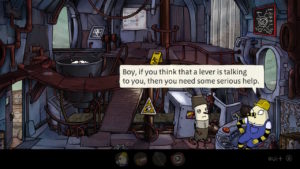
Your return to Asposia is livelier this time around. You, again, play Robert. Three years after the first game, you discover Robert was petrified. At the end of The Inner World, Robert releases the people of Asposia who had been petrified. In the first game, most of the people in Asposia had been petrified. Later in this game, Robert discovers he belongs to a family of similar flute people.
These individuals actually control Asposia. Robert is destined to lead Asposia. In his absence, however, a man, and trader, Emil, has made Robert’s flute nose people public enemy number one to Asposias’ residents. As the title indicates, Robert, with the help of his pigeon friend, Peck and Laura, a love interest, must find the last wind monk in order to save his people and unify Asposia. He must also follow an adventurous quest to define his destiny.
The Controls
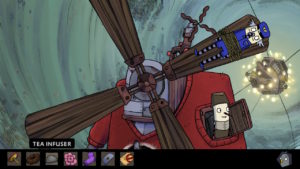
The Inner World: The Last Wind Monk’s controls are similar to the first game. The left analog stick moves Robert throughout Asposia. The L and R shoulder pads allow Robert to pick out specific items on screen, hotspots, and interact with them.
The LR shoulder button allows players to get help with puzzles on screen. The ZR shoulder button accesses Robert’s flute songs. The plus button allows players to access the main menu on screen. The X button allows players to access Robert’s inventory.
The A and B buttons allow players to confirm, or cancel actions on screen. The Y button accesses the hotspots as well. This time around, the game allows you to operate as Robert, and his pigeon friend, Peck, from the start. You have to switch between Peck and Robert, and later Laura, to solve the puzzles in front of you. This game requires that you move between the different characters to solve puzzles rather than just using only Robert.
Deeper and deeper
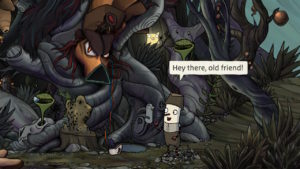
This game is a direct sequel to the previous title. The game continues to use three-dimensional space, and models, with beautiful two-dimensional art. The first game’s focus was on Robert and his quest to solve the mystery of the wind fountains. The first game is more personal. This game manages to expand Asposia and brings more life to the civilization. There are farmlands, industrial landscapes, more citizens, and corners to the puzzle spaces available in Asposia. The classical scores are as beautiful as ever.
The first game requires players to mimic notes on the flute and produce music in order for Robert to succeed in his quest. This game offers ready, and available, songs, for Robert to produce with a push of a button. However, The Inner World: The Last Wind still offers complex, musical, puzzles for players to solve.
…And Deeper
The real difference between The Inner World, and this sequel, is Robert’s use of his friends Peck, the pigeon, and Laura, the thief and love interest. The middle portion of the game requires a team work in order to solve the breadth of the puzzles put in front of you. Laura, Robert, and Peck, for example, have to operate in different portions of a cable car station. They each interact with their parts of the station.
It is seamless and, as long as you follow the lore of the game, offers players some solid puzzles. The nature of their teamwork, however, seamless can be a series of lengthy interactions. This is something I love, and dislike about this continuation of Robert’s journey. Robert needs help on this quest. The way these three characters interact, with the backtracking aspects of this title, makes this quest feel unnecessarily long.
For example, in the cable car station, Robert, Laura, and Peck all must complete different puzzles, in various parts of the station. The problem is, more than once, you can complete a task for Robert, but it might be necessary for Laura, or Peck to finish the same puzzle. If this happens once, that is fine. This pops-up a number of times throughout the game. A puzzle, which might be fun, becomes a grind. he Inner World: The Last Wind looks great in portable modes and is even stronger in television mode.
Conclusion
Headup Games and Studio Fizbin’s The Inner World: The Last Wind Monk is my version of Sega, and Monolith Production’s, Condemned 2: Blood Shot. The first game by these companies, Condemned: Criminal Origins, was a precise, horror, experience I would play on a friend’s console. It was a personal game. The game was sharp for its time, but also had character. The first game operates in the dark, but asks you to be constantly aware. You never knew what would come after you from out of the shadows. You had to be ready. Condemned 2: Blood Shot is a dark action game. It is not the same as the first game. Enemies constantly attack.
I believe there is even a first-person fight mode in the game. It is enjoyable, but is just a very different experience. The Inner World: The Last Wind Monk is not so different from the first game. It is just lengthier in a way. In my personal experience, this was not a good thing. It feels like the game could be shorter in certain areas. There is a puzzle with the character Laura in jail. It is a good addition, but at times, and after other longer puzzles, it lengthens the Asposia experience, but not in the best way. There is the first puzzle in this game. It is well done. However, it is unnecessarily lengthy, in my opinion. I do believe The Inner World: The Last Wind Monk is a necessary purchase with its predecessor. It is something to experience. Just prepare for a more bulky experience.
